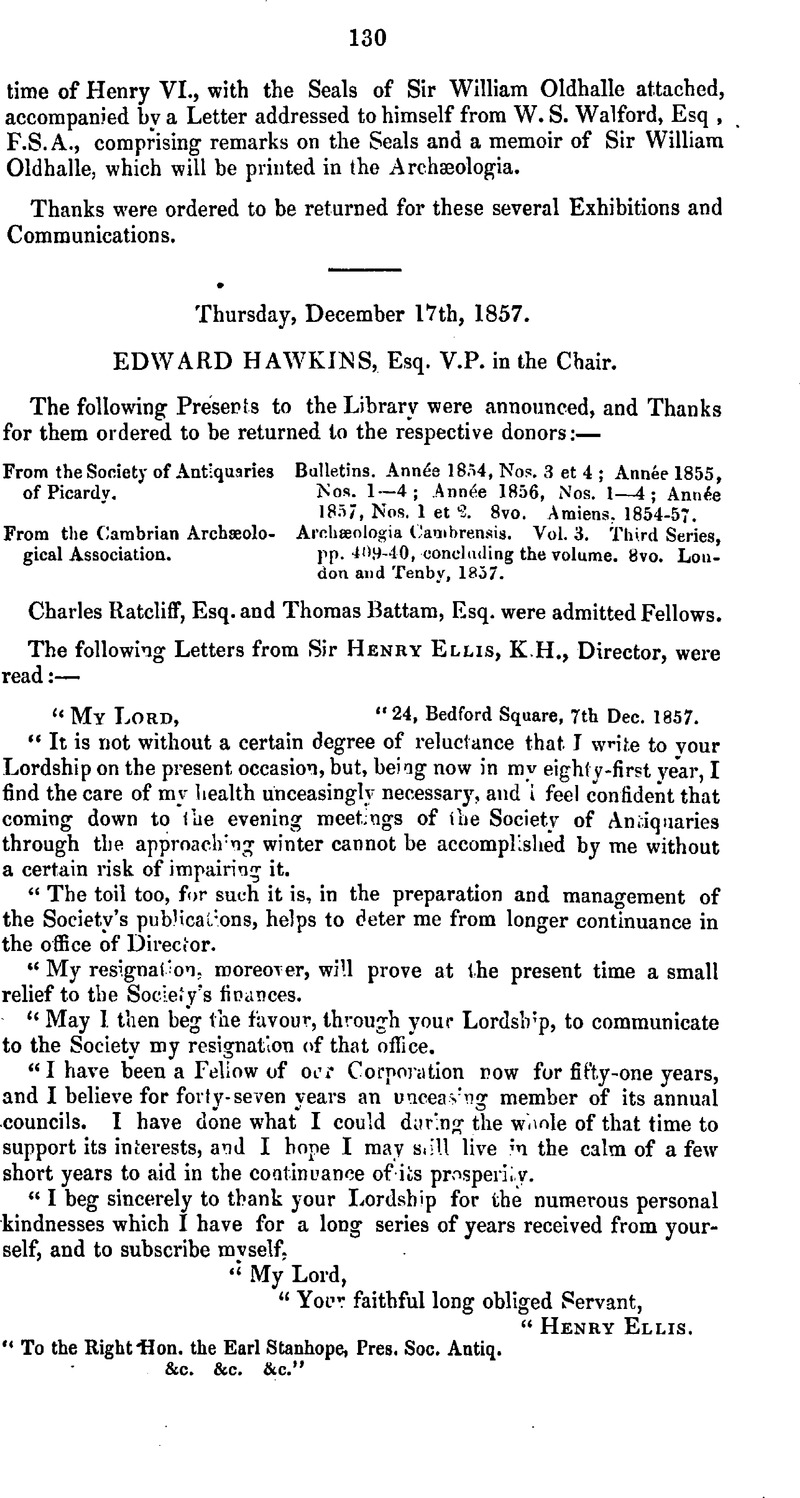No CrossRef data available.
Article contents
Thursday, December 17th, 1857
Published online by Cambridge University Press: 10 May 2010
Abstract

- Type
- Proceedings
- Information
- Copyright
- Copyright © The Society of Antiquaries of London 1859
References
* See Archseologia, XXVI. pi. L. fig. 1. The portion exhibited having been compared with the corslet, was found to fit on to the left-hand corner of the upper part of the central portion, and has been liberally presented to the British Museum by Sir Walter C. Trevelyan. It is an important acquisition, as it has in it one or two rude holes similar to some which occur along the broken edge of one of the great gaps in the corslet, and which had been supposed to have been made by the persons who obtained it after its discovery to enable them to fix it on a board; probably the reason of their being omitted in the engraving in the Archseologia. This fragment having been separated from the rest at the time of the discovery, shews that the holes existed when the corslet was interred, and may possibly throw some light on the way in which it was originally fitted together. Another missing portion has recently been secured to the Museum by the kindness of Mr. Hughes of Chester. It is very desirable that any other possessors of fragments should allow them to be re-united to the main mass. In 1852 Mr. A. T. Roberts of Mold presented to the British Museum one of the small amber beads found in the tumulus, the discovery of which is alluded to in the Archseologia, but the originals had all disappeared. It is pierced, and is in the form of a flattened sphere, very different from the rough beads of Saxon interments.




